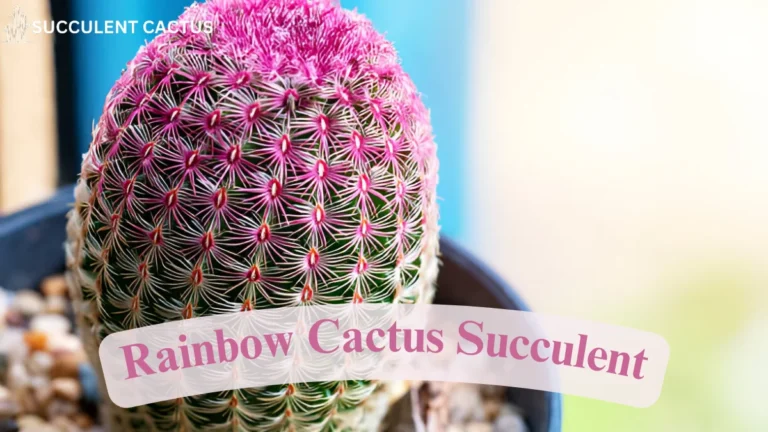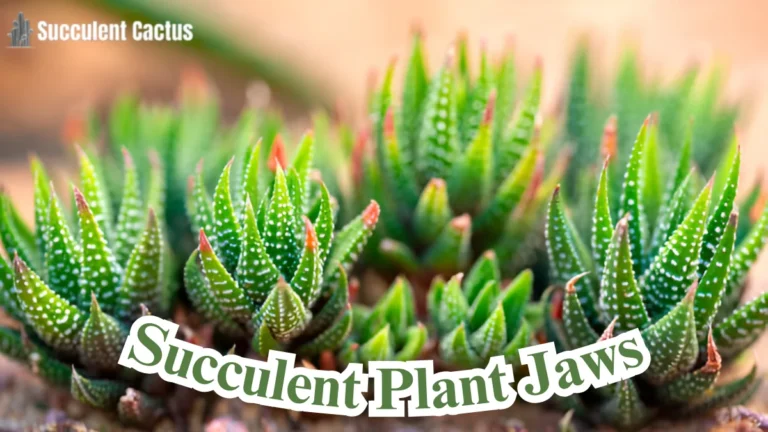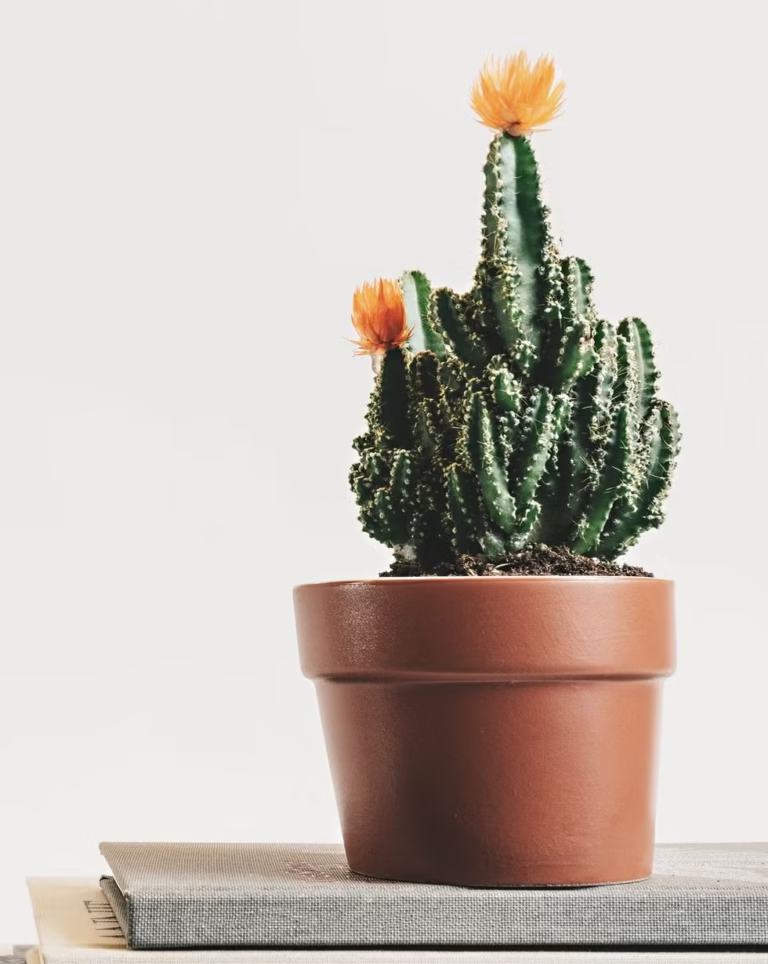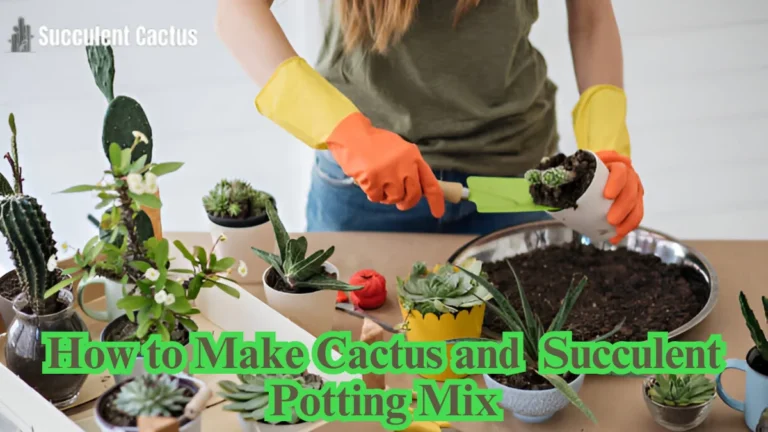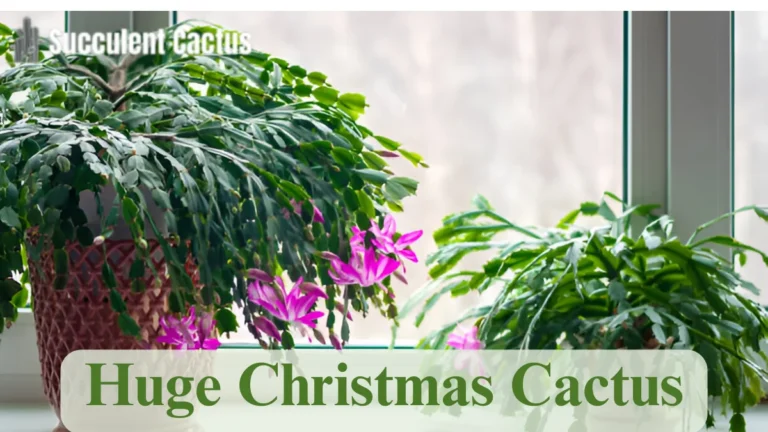Succulent Plant Uses: A Comprehensive Guide to Their Benefits and Applications

Succulents are more than just trendy houseplants; they serve various purposes beyond aesthetics. These hardy, drought-resistant plants have been used for centuries in medicine, skincare, food, and even construction. Whether you’re interested in their medicinal benefits, environmental impact, or creative applications, this article will cover everything you need to know about succulent plant uses.
Succulents in Traditional and Modern Medicine
Healing Properties of Succulents
Succulent Plant Uses have been recognized in traditional medicine across various cultures, as many species contain antibacterial, anti-inflammatory, and hydrating compounds that help treat wounds, burns, and skin conditions.
Common Medicinal Succulents and Their Benefits
| Succulent Plant | Medicinal Uses | Common Applications |
| Aloe Vera | Heals burns, hydrates skin, aids digestion | Skincare, herbal medicine |
| Agave | Antiseptic, anti-inflammatory | Wound care, pain relief |
| Prickly Pear (Opuntia) | Lowers cholesterol, regulates blood sugar | Food, diabetes treatment |
| Kalanchoe | Anti-cancer boosts immunity | Herbal medicine, teas |
These succulents have been scientifically proven to contain bioactive compounds that benefit human health. Aloe vera, for example, contains polysaccharides and glycoproteins, which speed up wound healing and reduce inflammation.
How to Use Medicinal Succulents at Home
- Aloe Vera Gel: Apply directly to burns or irritated skin.
- Prickly Pear Juice: Drink to improve digestion and control blood sugar.
- Agave Syrup: Used as a natural sweetener with anti-inflammatory properties.
- Kalanchoe Leaves: Used in herbal teas for boosting immunity.
Scientific Studies on Succulent-Based Medicine
Recent research has confirmed the medicinal properties of succulents:
- A 2021 study on Aloe Vera found it to be more effective than synthetic treatments in reducing burn recovery time.
- Prickly pear extract has been shown to reduce oxidative stress, supporting cardiovascular health.
Succulents in the Skincare Industry
Why Succulents Are Great for Skin
Many succulent plants contain moisturizing, anti-aging, and soothing properties, making them a popular ingredient in skincare products.
| Skin Concern | Best Succulent | Why It Works |
| Dry Skin | Aloe Vera | Hydrates and locks in moisture |
| Acne & Inflammation | Prickly Pear | Reduces redness and irritation |
| Aging & Wrinkles | Agave | Contains saponins that promote collagen production |
| Sensitive Skin | Kalanchoe | Soothes and protects against environmental damage |
How Succulents Are Used in Skincare
- Aloe Vera Gel: Found in face masks, creams, and serums.
- Prickly Pear Oil: A powerful anti-aging ingredient.
- Agave Extract: Used in moisturizers and body lotions.
- Succulent-Infused Face Mists: Provide hydration throughout the day.
DIY Succulent-Based Skincare Recipes
- Aloe Vera & Honey Face Mask: Hydrates and brightens the skin.
- Prickly Pear & Coconut Oil Serum: Reduces fine lines.
- Agave & Oatmeal Scrub: Gently exfoliates and moisturizes.
Succulents in Food and Beverage Production
Edible Succulents and Their Nutritional Benefits
Certain succulents are not only safe to eat but also highly nutritious.
| Edible Succulent | Nutritional Benefit | Common Uses |
| Prickly Pear | Rich in antioxidants and fiber | Juices, salads, jams |
| Agave | Natural sweetener, low glycemic index | Syrup, tequila |
| Aloe Vera | Aids digestion, high in vitamins | Smoothies, detox drinks |
Popular Succulent-Based Foods
- Prickly Pear Juice: Refreshing and full of vitamin C.
- Agave Syrup: A healthier alternative to sugar.
- Aloe Vera Drinks: Boost hydration and digestion.
Succulents in Alcoholic Beverages
- Tequila and Mezcal: Made from the Agave plant.
- Cactus Beer: Brewed using Opuntia extract.
- Aloe-Infused Cocktails: A trendy addition to modern mixology.
Succulents as Natural Air Purifiers
How Succulents Improve Air Quality
Succulents absorb toxins like benzene, formaldehyde, and carbon dioxide, helping to clean indoor air.
| Succulent Type | Air-Purifying Ability |
| Snake Plant | Removes toxins like CO2 and formaldehyde |
| Aloe Vera | Absorbs pollutants from cleaning products |
| Echeveria | Enhances oxygen levels |
Best Succulents for Air Purification
- Aloe Vera: Filters out pollutants.
- Snake Plant: Converts CO2 into oxygen at night.
- Jade Plant: Absorbs indoor toxins.
Where to Place Succulents for Maximum Benefit
- Bedrooms: Improves sleep quality.
- Living Rooms: Enhances air circulation.
- Workspaces: Increases productivity and reduces stress.
Succulents in Landscaping and Home Decor
Why Succulents Are Popular for Landscaping
Succulents require low maintenance, minimal water, and thrive in harsh conditions.
Creative Landscaping Ideas with Succulents
- Rock Gardens: Add visual contrast.
- Vertical Gardens: Maximize small spaces.
- Terrariums: Elegant indoor decorations.
Choosing the Right Succulents for Landscaping
| Landscaping Need | Recommended Succulents |
| Drought-Tolerant Ground Cover | Sedum, Ice Plant |
| Colorful Accents | Echeveria, Crassula |
| Low-Maintenance Borders | Agave, Yucca |
Succulents for Sustainable Living
How Succulents Contribute to Sustainability
Succulents require less water, fewer pesticides, and minimal upkeep, making them a green alternative to traditional plants.
Using Succulents to Reduce Water Waste
Succulents store water efficiently, reducing the need for constant watering.
Eco-Friendly Products Made from Succulents
- Agave Fibers: Used in biodegradable plastics.
- Cactus Leather: A vegan alternative to animal leather.
- Succulent-Based Packaging: Sustainable and biodegradable.
Succulents as a Source of Inspiration
Symbolism of Succulents in Different Cultures
- Mexican Culture: Represents resilience and survival.
- Chinese Feng Shui: Brings positive energy and prosperity.
- Native American Traditions: Used in spiritual healing.
Succulents in Art and Fashion
- Cactus-Inspired Designs: Found in jewelry and home decor.
- Succulent Motifs in Clothing: A trend in eco-friendly fashion.
Succulents in Literature and Folklore
Many cultures associate succulents with strength, endurance, and protection.
Succulents in Psychological and Emotional Well-being
How Succulents Reduce Stress and Anxiety
Succulent Plant Uses include reducing stress and promoting mental well-being, as studies show that exposure to greenery helps lower cortisol levels. Their low-maintenance nature makes them a perfect addition to homes and workspaces for a calming environment.
- Succulents create a calming environment by adding natural beauty to a space.
- Caring for plants can be therapeutic, promoting mindfulness and relaxation.
- Having succulents on your desk or workspace can enhance focus and reduce work-related stress.
A study published in the Journal of Physiological Anthropology found that interacting with indoor plants, such as succulents, can lower heart rate and blood pressure.
Using Succulents for Meditation and Mindfulness
Succulents are great companions for meditation and mindfulness practices. Their unique shapes, colors, and slow-growth patterns make them an excellent focal point for contemplation.
- Zen succulent gardens are used in meditation rooms to create a tranquil space.
- Observing succulent growth helps cultivate patience and appreciation for slow, steady progress.
- Succulent care routines encourage a mindful approach to daily life.
Best Succulents for Emotional Healing
Certain succulents are believed to have symbolic meanings related to emotional healing:
| Succulent Type | Emotional Benefit |
| Jade Plant | Brings prosperity and positive energy. |
| Aloe Vera | Symbolizes healing and protection. |
| Echeveria | Represents endurance and inner strength. |
| Haworthia | Encourages resilience and adaptability. |
Adding these plants to your home or workspace can positively influence mood, productivity, and overall emotional balance.
Succulents in Water Conservation and Environmental Impact
Succulents as Drought-Resistant Plants
One of the most significant benefits of succulents is their ability to survive in arid conditions. They store water in their leaves, stems, or roots, making them highly drought-tolerant.
- They require up to 90% less water than traditional plants.
- Their CAM (Crassulacean Acid Metabolism) photosynthesis process allows them to absorb carbon dioxide at night, reducing water loss.
- They thrive in xeriscaping, an eco-friendly landscaping technique that reduces water use.
How Succulents Help Reduce Soil Erosion
Succulents have deep root systems that help stabilize soil and prevent erosion in areas prone to droughts and heavy winds.
- Agave and Aloe Vera are commonly planted on slopes to prevent landslides.
- Ice Plant (Delosperma) is used for coastal erosion control due to its spreading habit.
- Succulents improve soil fertility by adding organic matter when they decompose.
Succulents in Carbon Sequestration and Air Purification
Succulents play a role in reducing carbon footprints and improving air quality:
| Environmental Benefit | Succulents That Contribute |
| Carbon absorption | Cacti, Aloe Vera, Snake Plant |
| Toxin removal | Jade Plant, Echeveria, Zebra Plant |
| Reduction of greenhouse gases | Large agave and cactus species |
By absorbing pollutants and increasing oxygen levels, succulents contribute to a healthier, greener planet.
Succulents as Functional Indoor Décor
Why Succulents Are Perfect for Home Decoration
Succulent Plant Uses include indoor décor, as they are stylish, versatile, and require minimal upkeep, making them a perfect choice for any space.
- They come in various shapes, sizes, and colors, complementing any home aesthetic.
- They require little sunlight and water, making them low-maintenance.
- They enhance indoor air quality and humidity control.
Creative Ways to Incorporate Succulents in Interior Design
- Succulent wall art: Vertical gardens or living walls add a modern touch.
- Terrarium centerpieces: Glass terrariums with succulents bring nature indoors.
- Hanging succulent planters: Save space while adding greenery to small rooms.
| Décor Type | Best Succulent Choices |
| Tabletop centerpieces | Echeveria, Crassula, Sedum |
| Wall-mounted succulent frames | Jade Plant, String of Pearls |
| Mini succulent arrangements | Haworthia, Zebra Plant |
Best Indoor Succulents for Low-Light Spaces
- Snake Plant (Sansevieria): Thrives in low light and improves air quality.
- Zebra Plant (Haworthia): Compact and requires minimal sunlight.
- Jade Plant (Crassula ovata): Grows well indoors with indirect light.
Succulents in Wildlife Conservation and Habitat Restoration
How Succulents Support Pollinators
Many succulent species produce nectar-rich flowers, attracting bees, butterflies, and hummingbirds.
- Aloe Vera and Agave provide nectar for pollinators.
- Echeveria blooms support local bee populations.
- Prickly Pear Cactus flowers attract hummingbirds.
Using Succulents for Restoring Degraded Land
Succulents are essential in desert reforestation and ecological restoration.
- Cactus reforestation projects help combat desertification.
- Succulent cover crops restore soil moisture in dry regions.
- Native succulent species are reintroduced to balance ecosystems.
Threats to Wild Succulent Species and Conservation Efforts
| Threat | Impact on Succulents | Conservation Efforts |
| Illegal harvesting | Over-collection leads to endangerment. | Regulation of plant trade (CITES). |
| Climate change | Habitat loss and extreme weather threaten species. | Conservation programs for rare succulents. |
| Urban expansion | Land clearing destroys natural habitats. | Protected succulent reserves and botanical gardens. |
Succulents play a critical role in maintaining biodiversity and ecological balance, making their conservation essential.
Succulents as Unique and Thoughtful Gifts
Why Succulents Make the Perfect Gift
Succulent Plant Uses extend to symbolism, as they represent endurance, love, and prosperity, making them ideal gifts for various occasions.
- Long-lasting: Unlike flowers, they can thrive for years.
- Low maintenance: Perfect for people who lack gardening skills.
- Symbolic meaning: Jade Plant symbolizes prosperity, Aloe Vera represents healing.
Best Succulents for Gifting
| Occasion | Recommended Succulent | Symbolism |
| Housewarming | Jade Plant | Prosperity and good fortune |
| Birthday | Echeveria | Growth and renewal |
| Get Well Soon | Aloe Vera | Healing and protection |
| Wedding Favors | String of Pearls | Everlasting love |
Creative Ways to Present Succulents as Gifts
- Mini succulent arrangements in decorative pots.
- Personalized succulent planters with engraved messages.
- Succulent gift boxes paired with self-care items like candles.
Succulent gifts are not only beautiful but also meaningful, making them a thoughtful choice for any special occasion.
FAQs (Frequently Asked Questions)
- Can succulents be used in cooking?
Yes, edible succulents like Prickly Pear and Aloe Vera are used in salads, drinks, and desserts. - What succulents are best for gifting?
Jade Plant, Echeveria, and Aloe Vera are popular choices due to their symbolism and low maintenance. - Do succulents attract pollinators?
Yes! Many succulent flowers attract bees, butterflies, and hummingbirds. - How often do succulents need water?
Most succulents need watering every 1-2 weeks, allowing the soil to dry completely. - Are succulents environmentally friendly?
Yes, they conserve water, prevent soil erosion, and improve air quality.
Conclusion
Succulent plant offers a wide range of uses, from health and wellness to environmental sustainability and home décor. Whether you’re caring for your skin, purifying your air, or conserving water, these versatile plants provide numerous benefits. Incorporating succulents into daily life enhances well-being, creativity, and sustainability, making them a valuable addition to any home or garden.


